An essential guide on how to get to Machu Picchu in 17 different detailed ways
There are many ways on how to get to Machu Picchu according to your fitness level, the time you have in Peru, and many other factors. In this travel guide, we’ll explore the best options for you.
When choosing the best ways how to get to Machu Picchu, there are several factors to consider to ensure a memorable and hassle-free journey.
First, physical fitness. Some routes, like the Inca Trail or the Salkantay Trek, require a good level of fitness due to their length and the challenging mountainous terrain.
Some trekking routes can be challenging and require prior trekking experience, especially in mountainous regions. How physically fit are you?
Your travel duration also plays a big factor. Different modes of transport and routes vary in duration. Whether you have limited time or several days can dictate the best way for you to reach Machu Picchu.

Next, what is your budget? The cost can vary significantly between options.
While train journeys might be more comfortable and faster, they can also be pricier compared to trekking or taking a combination of bus and walking.
Weighing these factors based on personal preferences and circumstances will help you choose the best ways to travel to Machu Picchu so keep reading and see what’s the best option for you.
You might also like:
- Is it safe to travel to Machu Picchu?
- What to pack for Machu Picchu: a comprehensive traveler’s checklist
- How much does it cost to travel to Machu Picchu?
✈️ What city do you fly into to get to Machu Picchu?
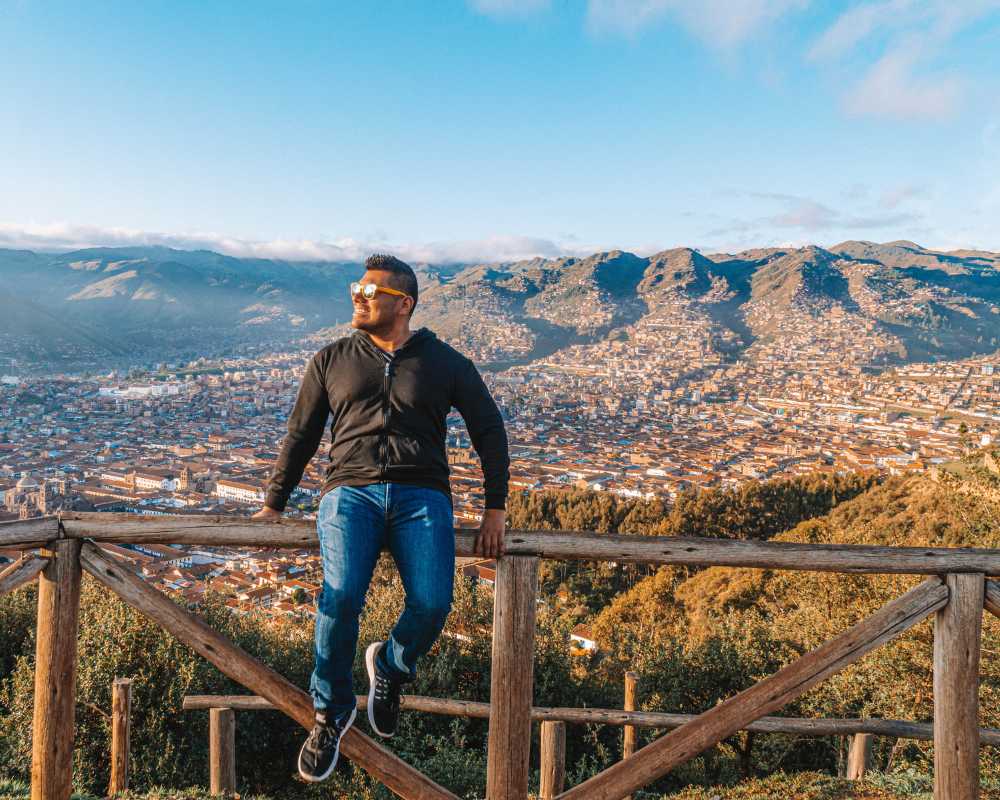
To get to Machu Picchu, you typically fly into the city of Cusco. The Alejandro Velasco Astete International Airport (CUZ) in Cusco is the nearest major airport to Machu Picchu.
⛰️ How to get to Machu Picchu
These are the best hikes to get to Machu Picchu and are recommended for intermediate hikers. If you are a beginner, make sure you have acclimatized in Cusco first or at least do a little bit of exercise at home before your trip to Peru.
1. Inca Trail to Machu Picchu
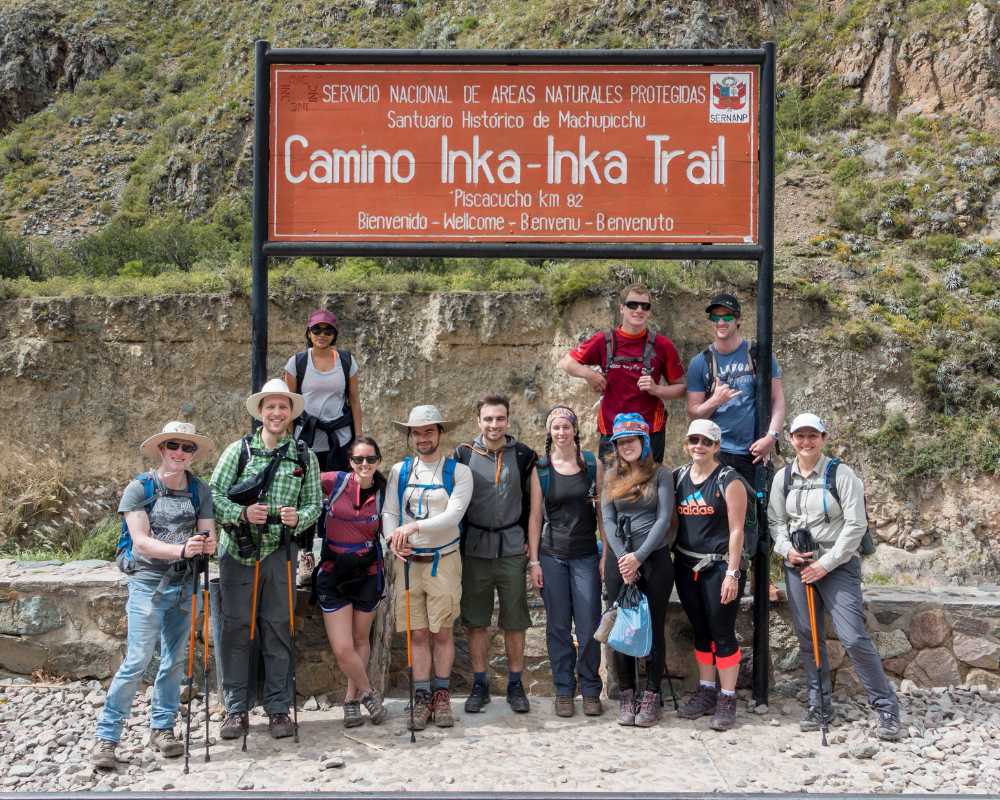
The Inca Trail begins at an altitude of around 2,800 meters (9,186 feet) at Km 82 and reaches its zenith at 4,215 meters at Dead Woman’s Pass.
The trek traditionally spans 4 days and 3 nights, although there is also a more concise 2-day version available for those short on time or seeking less of a physical challenge.
Depending on the trekking company and the services provided, the price for the classic 4-day trek usually falls between $600 and $1,500 USD. This cost encompasses the necessary permits, guides, porters, meals, and tent accommodations.
One of the primary advantages of the Inca Trail is that it leads directly to Machu Picchu via the iconic Sun Gate and is replete with archaeological sites and historical context often elaborated upon by knowledgeable guides.
However, it does have its drawbacks. Due to its popularity, the trail can get quite crowded, especially during peak seasons.
Additionally, the requirement for a permit – and the limited number of these permits available each day – can make securing a spot on the Inca Trail a competitive endeavor.
This trek also tends to be on the pricier side due to its high demand.
2. Salkantay Trek to Machu Picchu

Starting at approximately 3,900 meters (12,795 feet), the Salkantay Trek challenges hikers with its highest point at the Salkantay Pass, which stands at 4,630 meters (15,190 feet).
The journey typically unfolds over 5 days and 4 nights, although there are variations in duration available. The cost of this trek can range from $500 to $1,200 USD, contingent on the company and the level of service selected.
A significant draw of the Salkantay Trek is the diverse and dramatic landscapes it presents – from majestic snow-capped mountains to lush tropical rainforests.
Unlike the Inca Trail, it is generally less populated, allowing for a more solitary communion with nature.
Additionally, there’s no need for a permit, so last-minute adventurers can often secure a spot. However, the trek doesn’t offer a direct path to Machu Picchu.
Instead, trekkers end their journey in Aguas Calientes and either hike or take a bus to the archaeological site.
The ascent to the Salkantay Pass can also prove challenging for some, demanding good physical fitness.
👉🏽 See also: Salkantay Trek vs Inca Trail: which one is better?
3. Lares Trek to Machu Picchu
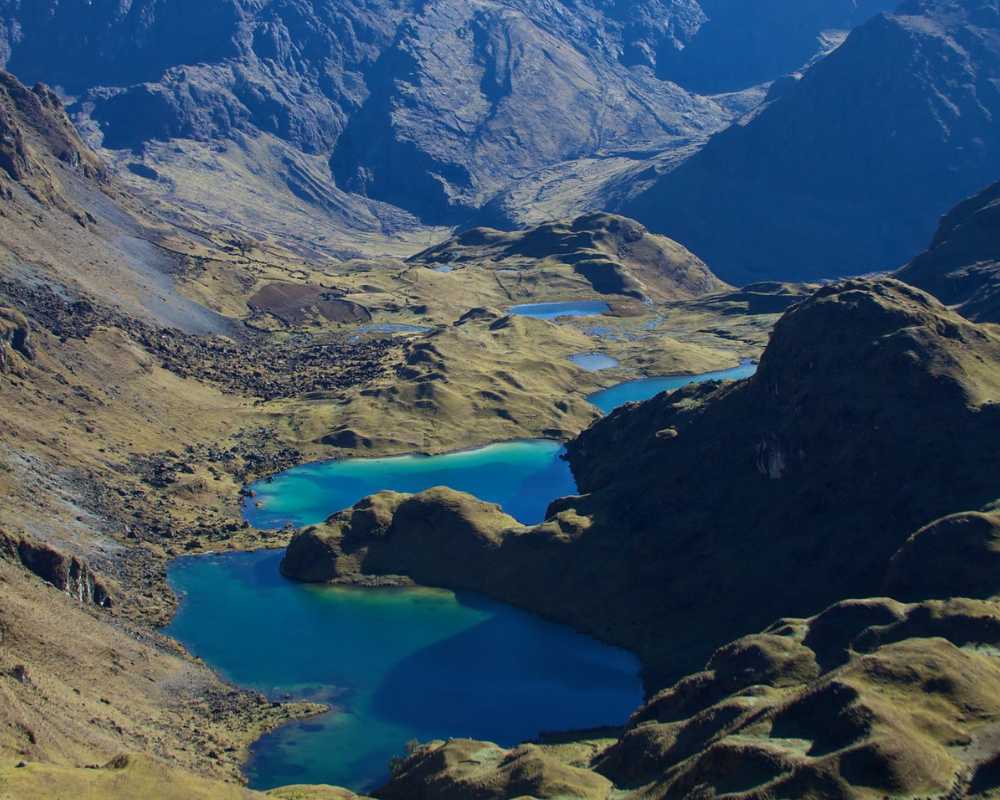
The Lares Trek, depending on the specific route taken, typically begins at an altitude of around 3,200 meters (10,498 feet) and can reach heights of up to 4,450 meters (14,599 feet).
The trek’s duration is commonly 3 to 4 days. When it comes to pricing, the Lares Trek usually costs anywhere from $500 to $1,000 USD, with the exact amount dependent on the chosen tour operator and included amenities.
One of the most distinct features of the Lares Trek is its immersion into traditional Andean culture. As trekkers wind their way through the path, they encounter local communities, getting a firsthand look at their customs and ways of life.
This route is also less traveled than some of the other popular treks, offering a more peaceful hiking experience. Some versions even offer stops at natural hot springs.
On the downside, unlike the Inca Trail, the Lares Trek doesn’t lead directly to Machu Picchu. Instead, the journey generally culminates in Ollantaytambo, from where participants board a train to Aguas Calientes.
The Lares Trek also has fewer archaeological sites compared to its more famous counterpart.
4. Choquequirao Trek to Machu Picchu

The Choquequirao Trek is a challenging and less-traveled path that starts at around 1,500 meters (4,921 feet) and peaks at approximately 3,050 meters (10,006 feet) at the Choquequirao archaeological site.
The trek usually spans 7 to 9 days, during which trekkers visit the spectacular Choquequirao ruins, sometimes referred to as the “sister” of Machu Picchu.
Prices for this trek typically lie between $800 and $1,500 USD, depending on the operator and the services included.
One of the major attractions of this trek is the opportunity to explore the Choquequirao ruins, which are often far less crowded than Machu Picchu, providing a more secluded experience.
The trek also traverses various terrains, from deep canyons to high plateaus, offering breathtaking views.
However, its challenging nature might not be suitable for everyone, particularly those not accustomed to multi-day trekking at high altitudes.
Additionally, the trek does not lead directly to Machu Picchu, so those wishing to visit the famed citadel would need to arrange additional transportation.
5. Vilcabamba Trek to Machu Picchu
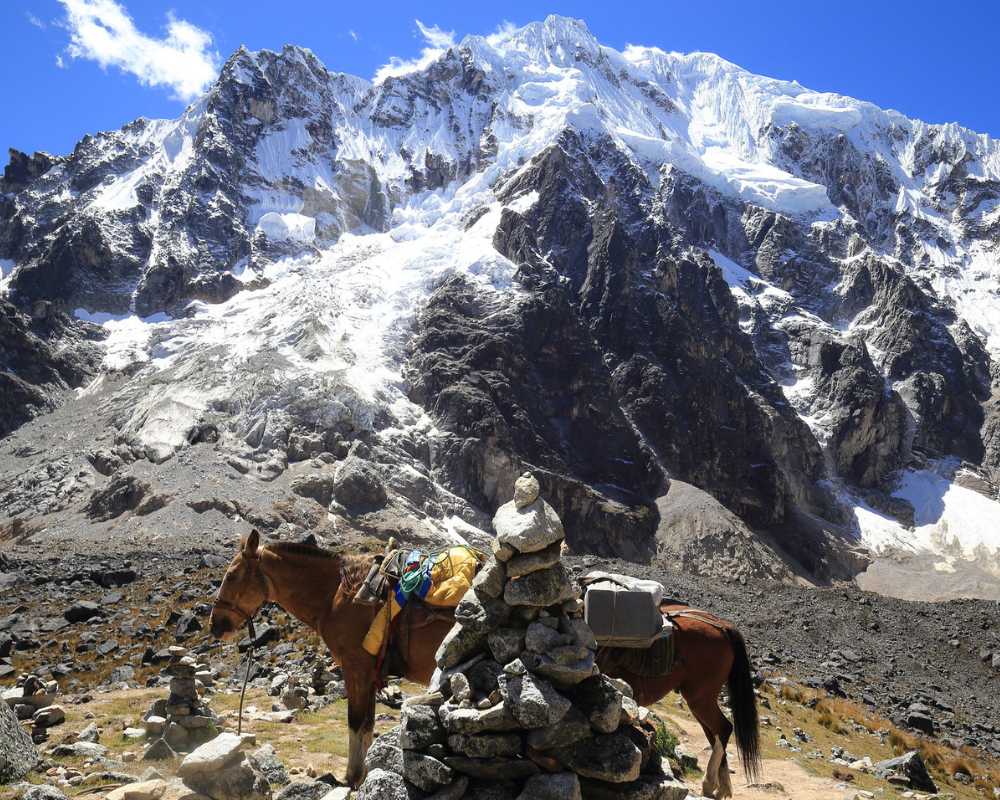
The Vilcabamba Trek, a lesser-known route to Machu Picchu, starts at varying altitudes based on the specific trailhead, but can reach elevations of up to 4,000 meters (13,123 feet) or more.
This trek is generally undertaken over 5 days, taking trekkers through the ancient Vilcabamba region.
Depending on various factors, including the guide company and inclusions, prices range from $700 to $1,300 USD.
A significant advantage of the Vilcabamba Trek is its relative isolation, offering trekkers the chance to experience the beauty of the Peruvian Andes without the crowds found on more popular routes.
The path is dotted with remnants of ancient Inca pathways and ruins, promising a journey rich in both natural beauty and history.
However, due to its remote nature, the trek can be quite challenging, with fewer amenities and facilities available en route.
Similar to the Choquequirao Trek, it doesn’t lead directly to Machu Picchu, necessitating additional arrangements for those looking to visit the iconic site.
Plan your trip to Peru with us! Get expert travel advice and customized trip-planning itinerary from our local experts on the ground.
6. Huchuy Qosqo Trek to Machu Picchu
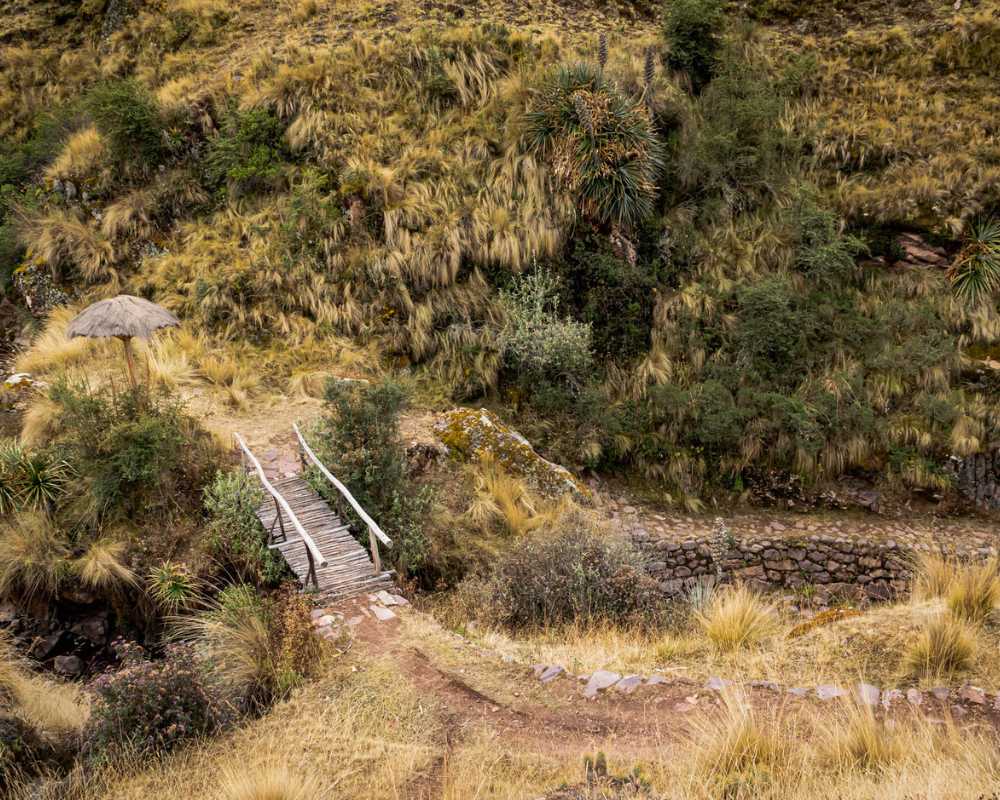
Beginning at an elevation of around 3,600 meters and reaching heights of roughly 4,100 meters (13,451 feet), the Huchuy Qosqo Trek is a shorter journey to Machu Picchu, typically completed in 2 days.
The trek leads to the lesser-known but impressive Huchuy Qosqo ruins. Prices for this trek are generally more affordable than longer alternatives, with costs ranging from $300 to $600 USD.
The shorter duration makes it an appealing choice for those with limited time or those seeking a less physically demanding route.
Along the trek, participants are rewarded with panoramic views of the Sacred Valley and glimpses into rural Andean life.
However, as with several other treks, the Huchuy Qosqo Trek doesn’t provide a direct path to Machu Picchu.
After exploring the ruins, trekkers usually proceed to Ollantaytambo, from where they take a train to Aguas Calientes.
While the shorter length might be a pro for some, it could be a con for those seeking a more extended immersive experience in the Andes.
7. Inca Jungle Trek to Machu Picchu
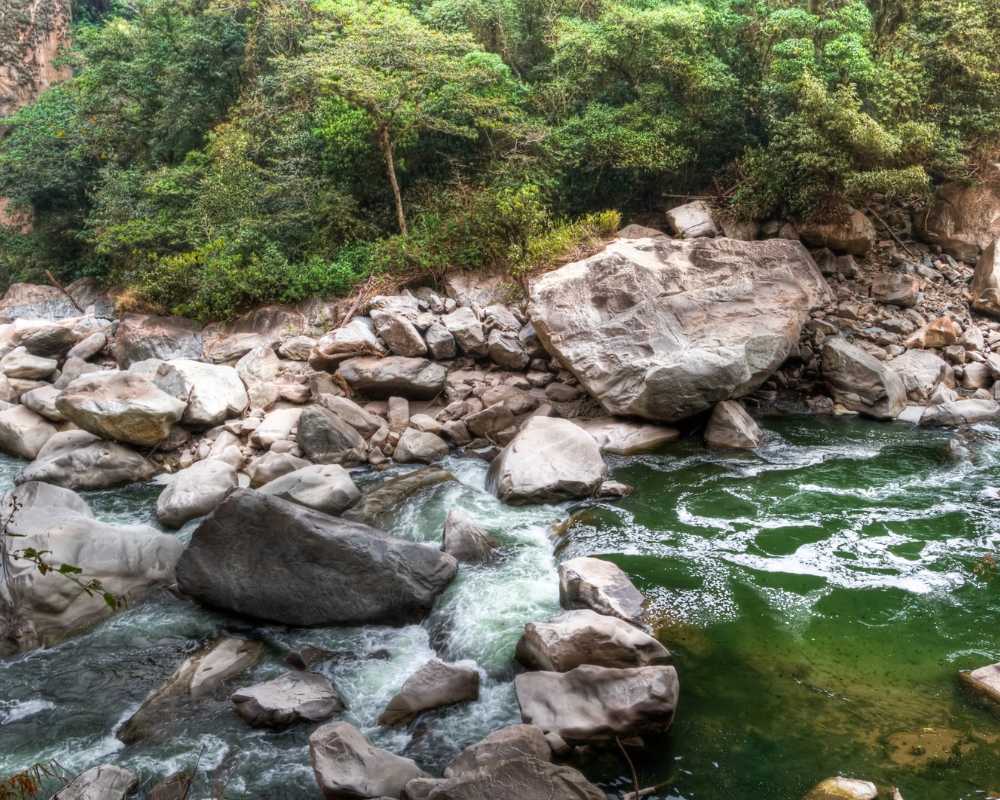
The Inca Jungle Trek offers a multifaceted adventure starting at altitudes around 4,300 meters (14,107 feet) and descending to approximately 2,400 meters (7,874 feet) by the time you reach Machu Picchu.
This trek typically lasts for 4 days and combines a range of activities including biking, hiking, and, in some packages, rafting and ziplining.
Prices for this diverse experience range from $400 to $800 USD, contingent on the chosen tour operator and the activities included.
The primary appeal of the Inca Jungle Trek is its dynamic nature; instead of just trekking, participants get to experience various adventure activities amidst the stunning Andean landscapes.
This makes it particularly attractive for those seeking more than just a hike.
Additionally, the path winds through both high-altitude areas and lush jungles, offering a taste of the region’s biodiversity.
However, the varied activities might not be for everyone, especially those looking for a traditional trekking experience.
Additionally, some of the adventure activities may come with added risks, so it’s essential to ensure that safety precautions are in place.
8. Cachicata Trek (Inca Quarry Trek)
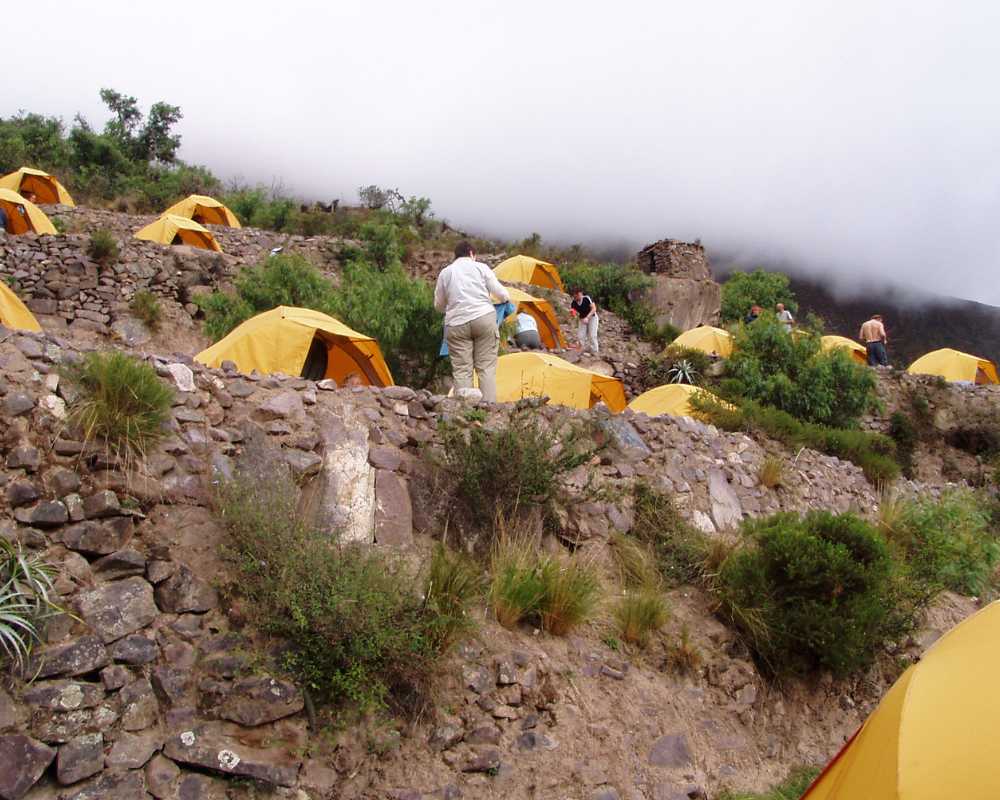
Beginning at roughly 2,800 meters (9,186 feet) and peaking at around 4,450 meters (14,599 feet), the Cachicata Trek, also known as the Inca Quarry Trek, spans a duration of 4 days.
This route takes trekkers through the Inca quarries of Cachicata, which once served as the primary source of stones for Ollantaytambo’s constructions.
Prices for this trek are usually between $500 and $900 USD, varying based on the tour operator and the services provided.
One of the standout features of the Cachicata Trek is the historical and archaeological insight it offers.
Hikers have the chance to see ancient chullpas (burial chambers), carved stones left unfinished, and various other Inca remnants, giving a unique glimpse into the civilization’s architectural prowess.
The trail also boasts sweeping views of the Sacred Valley and the Urubamba river, making it a treat for nature enthusiasts.
However, as with several other treks, the Cachicata does not lead directly to Machu Picchu. After completing the trek, participants typically take a train from Ollantaytambo to Aguas Calientes.
While this trek offers a mix of nature and history, it might not be the first choice for those who prioritize reaching Machu Picchu on foot.
9. Train Tracks Trek from Hidroeléctrica

Beginning at the Central Hidroelectrica Machu Picchu, which lies at an altitude of approximately 1,900 meters (6,233 feet), the Train Tracks Trek is not a traditional mountain trek but a unique route that follows the train tracks leading directly to Aguas Calientes, the town at the base of Machu Picchu.
This route typically takes about 2 to 3 hours of walking.
Given its simplicity, many choose to undertake this trek independently, although guided options are available.
Costs associated with this trek are minimal, mostly involving transportation to Hidroeléctrica, which can range from $10 to $40 USD depending on the mode of transport, and any meals or snacks you might purchase along the way or in Aguas Calientes.
Some travelers opt for a package with a guide, which might include additional services and might cost upwards of $100 USD or more, depending on inclusions.
The major attraction of the Train Tracks Trek is its straightforwardness, making it accessible even for those who are not seasoned hikers.
As you walk alongside the tracks, you’re surrounded by the verdant beauty of the high jungle, with towering mountains on either side and the sound of the roaring Urubamba River.
Additionally, it’s a popular option for those who’ve arrived at Hidroeléctrica by car or van from Cusco or Santa Teresa, allowing for a relatively quick arrival to Aguas Calientes without the need for a train ticket.
However, this trek does have its drawbacks. The path can be quite monotonous as it directly follows the train tracks.
There’s also the need to be cautious, as trains do use these tracks regularly. While accidents are rare, it’s crucial to remain alert and aware of the surroundings.
For those looking for an efficient and less physically demanding way to reach Aguas Calientes, the Train Tracks Trek from Hidroeléctrica can be an ideal choice, but it lacks the scenic diversity and challenges of the mountain treks.
🚞 How to get to Machu Picchu without hiking
Not everyone wants or is able to hike to Machu Picchu, and there are alternative ways to reach this iconic site without embarking on a multi-day trek. Here’s how you can do it:
How to get to Machu Picchu by train

From Cusco, you can take a train from Poroy station (a short taxi ride from Cusco) directly to Aguas Calientes, the town located at the base of Machu Picchu.
Another option is to first travel from Cusco to Ollantaytambo by bus or taxi, and then catch the train from Ollantaytambo to Aguas Calientes. This route often provides more train schedule options.
There are two main train companies that offer services to Aguas Calientes: PeruRail and Inca Rail. Both provide multiple departures daily and various levels of service, ranging from economical to luxurious.
Once you reach Aguas Calientes, you can take a bus up the winding road to Machu Picchu. The bus ride is about 25 minutes. Buses run frequently from the early morning until the late afternoon, ferrying visitors up and down the mountain.
If you’re feeling energetic but don’t want a long hike, you can also opt to walk from Aguas Calientes to the Machu Picchu entrance.
It’s a steep ascent, taking around 1.5 to 2 hours, but it’s a relatively short distance compared to the longer treks.
How to get to Machu Picchu by Car (up to a certain point)
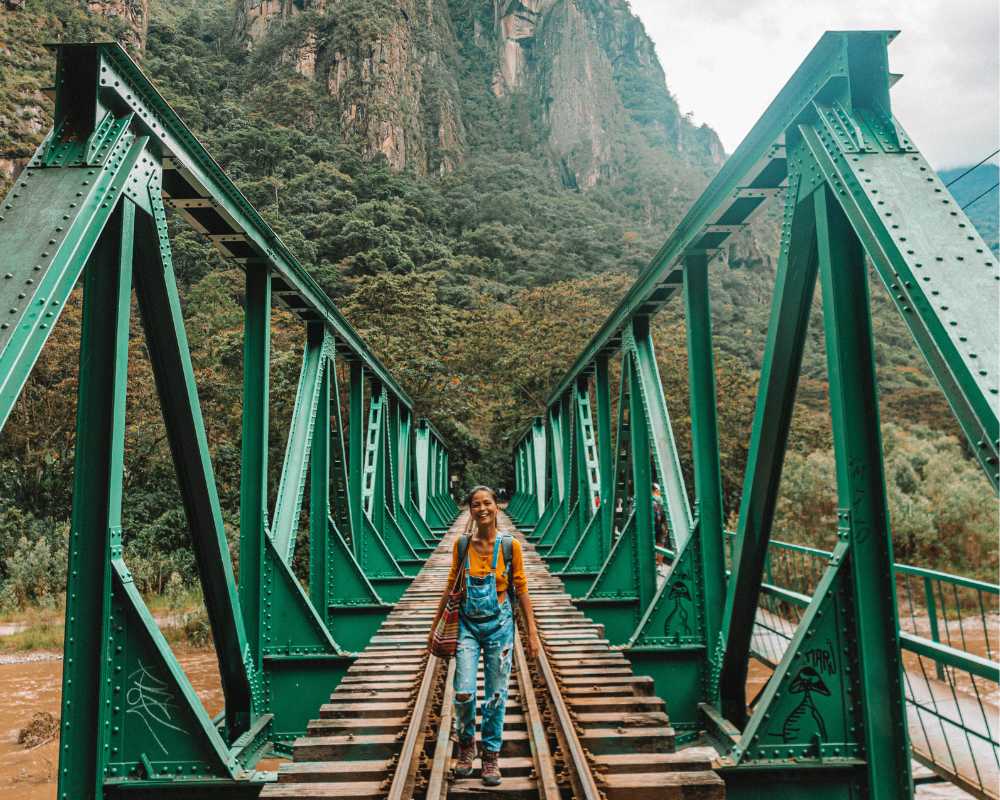
While you cannot drive directly to Machu Picchu or Aguas Calientes, it’s possible to drive to the town of Hidroeléctrica.
From there, you can walk along the train tracks (as previously mentioned) to Aguas Calientes. This option is popular among backpackers and budget travelers.
How to get to Machu Picchu by guided tours
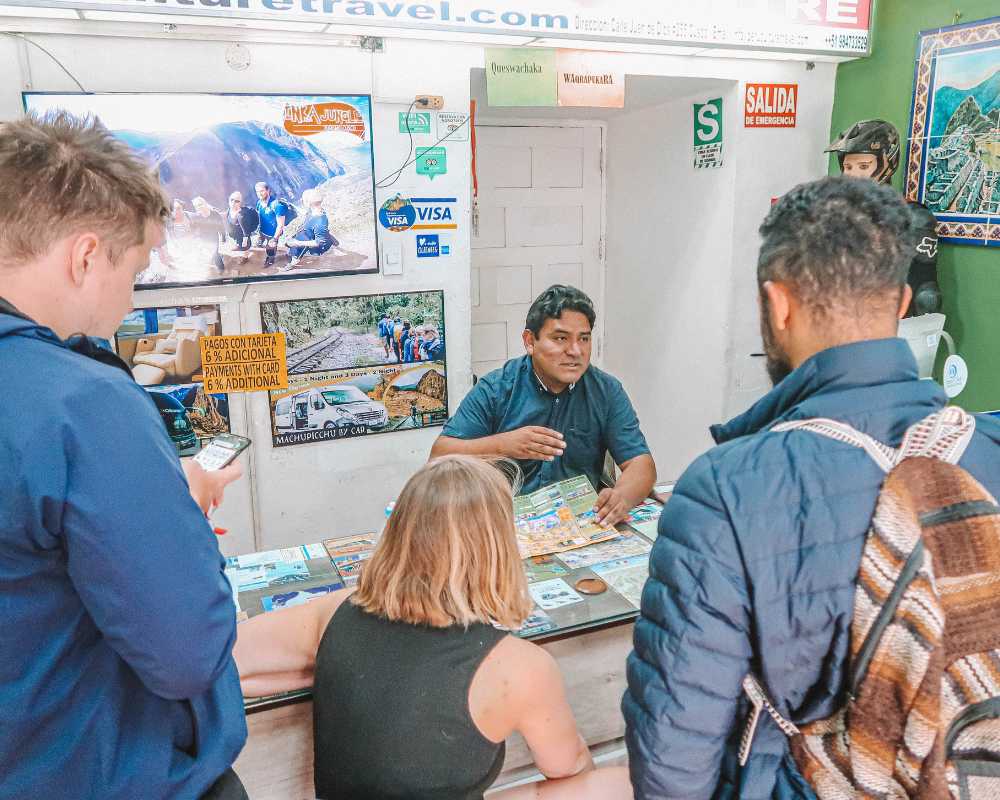
Many travel agencies offer guided day tours to Machu Picchu, often including transport from Cusco to Ollantaytambo, the train to Aguas Calientes, the bus to the ruins, entrance fees, and a guided tour of the archaeological site. This is an excellent option for those who prefer an organized, hassle-free experience.
🛬 How to get to Machu Picchu from Lima
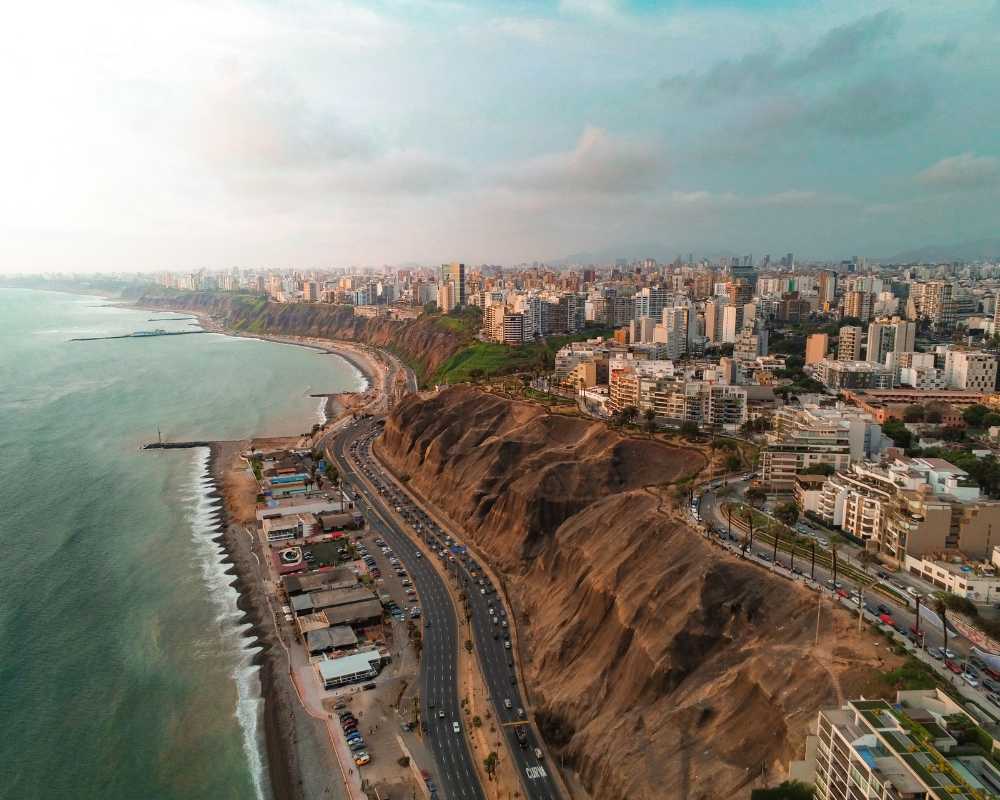
Machu Picchu from Lima is quite a long way but with Peru’s efficient transportation system, it is a common route. Here’s a step-by-step guide on how to get to Machu Picchu from Lima:
- Step 1: Get to Cusco via flight or bus. Flight takes 1.5 hours while the bus will take 25 hours.
- Step 2: Stay in Cusco to acclimatize. 3 days is a great time. Cusco is an amazing city so don’t just skip it!
- Step 3: Buy your Machu Picchu tickets or purchase a tour in Cusco. You MUST do this while in Cusco as it will be challenging to get them once you are out of Cusco.
- Step 4: Get to Aguascalientes from Cusco
- Step 5: Stay the night in Aguascalientes and prepare for your hike to Machu Picchu
- Step 6: Hike up to Machu Picchu from Aguascalientes or take the bus. Your choice!
🚌 How to get to Machu Picchu from Cusco

The easiest way to get to Machu Picchu from Cusco is by train. The Poroy Station in Cusco goes straight to Aguascalientes. Several train services, like the PeruRail and Inca Rail, operate on this route.
Many travelers take a bus or taxi to Ollantaytambo from Cusco and then catch a train to Aguas Calientes. This is often a less expensive train option compared to departing directly from Cusco.
From Cusco, take a bus or taxi to Ollantaytambo then take the train to Aguas Calientes. This is a popular combination where travelers take road transport to Ollantaytambo and then board a train to Aguas Calientes.
You can also get to Machu Picchu from Cusco to Santa Maria to Hydroelectric Station. This is a combination of a bus and a walk.
Travelers can take a bus from Cusco to Santa Maria and then to the Hydroelectric Station. From the Hydroelectric Station, it’s a 2-3 hour walk along the railway tracks to Aguas Calientes.
There were services in the past that offered helicopter rides from Cusco directly to Aguas Calientes, but they were rare, pricier, and subject to regulations and availability.
🚐 How to get to Machu Picchu from Arequipa
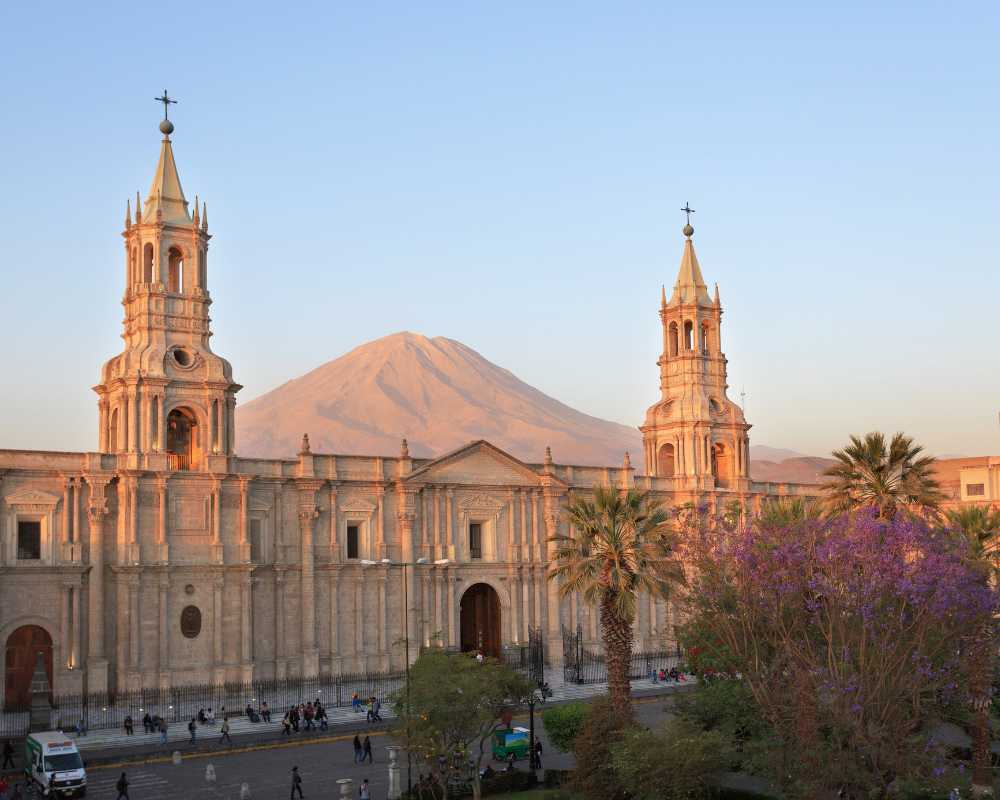
Getting to Machu Picchu from Arequipa involves a series of transportation steps since there’s no direct route.
First, you must get to Cusco. A flight from Arequipa to Cusco is the quickest option. Several airlines operate daily flights between Arequipa’s Rodríguez Ballón International Airport and Cusco’s Alejandro Velasco Astete International Airport.
The flight to Cusco from Arequipa usually takes about 1 hour. If you are taking the bus, various bus companies offer services from Arequipa to Cusco.
The bus journey can take anywhere from 10 to 12 hours, depending on the service. Some travelers opt for overnight buses to save on accommodation for a night and make the most of their daylight hours.
Once in Cusco, choose among the many ways to travel to Machu Picchu in this post. The point is, you must get to Cusco first.
🚏 How to get to Machu Picchu from Aguascalientes
Aguas Calientes, which is the town located at the base of Machu Picchu in Peru. Here’s how you get to Machu Picchu from there:
Aguas Calientes to Machu Picchu by bus
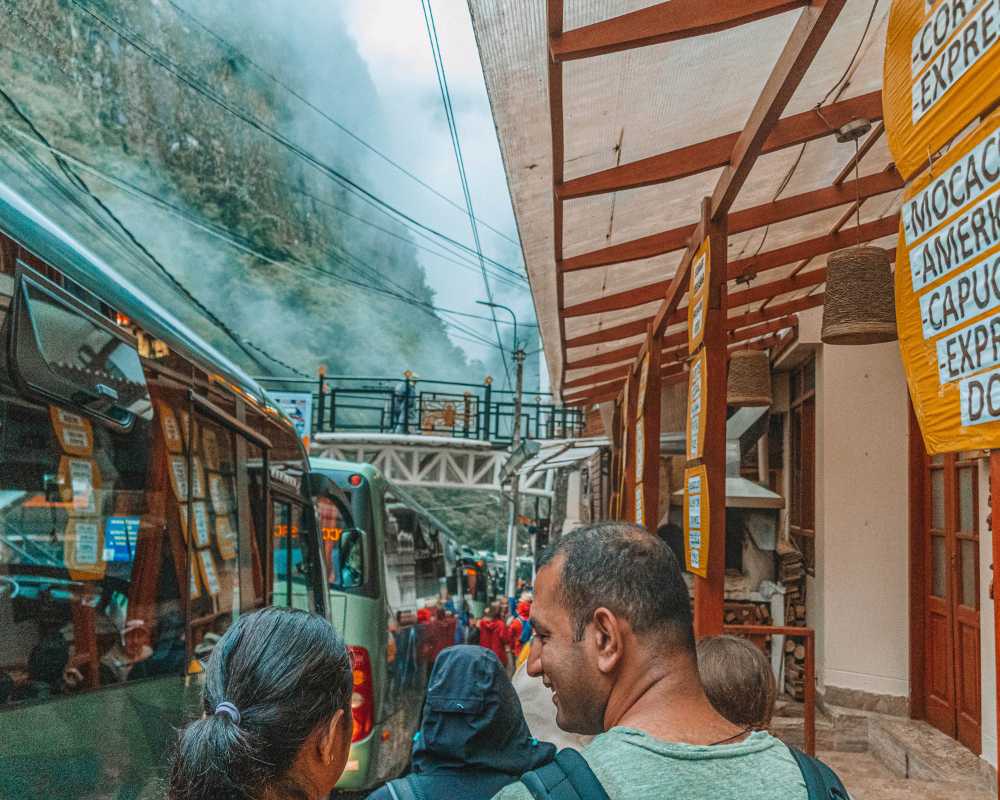
This is the most common way for tourists to reach Machu Picchu from Aguas Calientes.
Buses operate frequently starting from the early morning (around 5:30 AM) until the late afternoon. The ride takes about 25-30 minutes and offers scenic views as the bus winds its way up the mountain.
Tickets can be purchased at the bus ticket office in Aguas Calientes.
During the peak tourist season, it’s advisable to buy your bus ticket the day before and to queue early in the morning if you’re aiming for sunrise at Machu Picchu.
Aguas Calientes to Machu Picchu by foot

If you’re feeling energetic and want a challenge, you can hike up to Machu Picchu from Aguas Calientes.
The trek is steep, with many stairs and takes about 1.5 to 2 hours to reach the entrance of Machu Picchu, depending on your pace.
The path is well-marked, and you’ll likely encounter many other hikers, especially in the morning.
Whether you choose the bus or the hike, make sure to have your passport (or an official identification) and your Machu Picchu entrance ticket with you, as both are required for entry.
If you’re planning to hike one of the mountains at the site (Huayna Picchu or Machu Picchu Mountain), ensure you’ve also purchased the additional ticket for that, as entry numbers are restricted and often sell out in advance.
💵 What is the cheapest way to get to Machu Picchu?
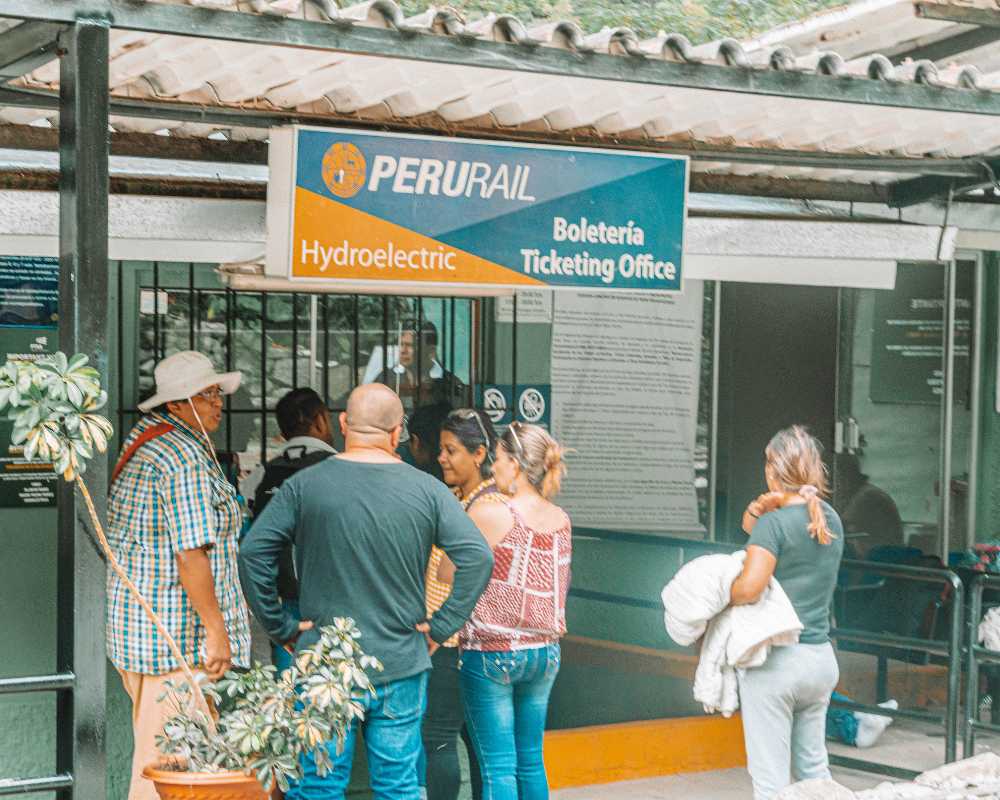
The cheapest way to get to Machu Picchu involves a combination of public transportation and walking.
From Cusco, you can take a bus or a shared minivan to the town of Santa Maria. This is a long drive and can take around 5-6 hours.
The journey passes through the Sacred Valley and over high mountain passes before descending into the jungle region.
From Santa Maria, you’ll need to transfer to another vehicle (usually a shared minivan) to get to Hidroeléctrica. This journey will take about 2-3 hours.
From Hidroeléctrica, you have the option to walk along the railway tracks to Aguas Calientes (the town at the base of Machu Picchu). The walk is relatively flat, follows the river, and takes about 2 to 3 hours.
Finally, from Aguas Calientes, you can either hike up to Machu Picchu, which takes about 1.5 to 2 hours, or take the bus (though the bus would add to the cost).
Even though this is the cheapest way to get to Machu Picchu, you’ll still need to purchase an entrance ticket for Machu Picchu, which should be bought in advance, especially during the peak season.
When it comes to safety, this route involves walking along or near train tracks. While many travelers opt for this approach and it’s generally considered safe, always be cautious and step off the tracks when trains approach.
Join our 14-day Peru Expedition tour!
Embark on a 14-day Peru tour, exploring the rich tapestry of ancient Incan ruins, vibrant cities, and breathtaking landscapes. From the mystical Machu Picchu to the colorful Rainbow Mountain, experience Peru’s cultural and natural wonders in a journey filled with adventure and unforgettable memories!



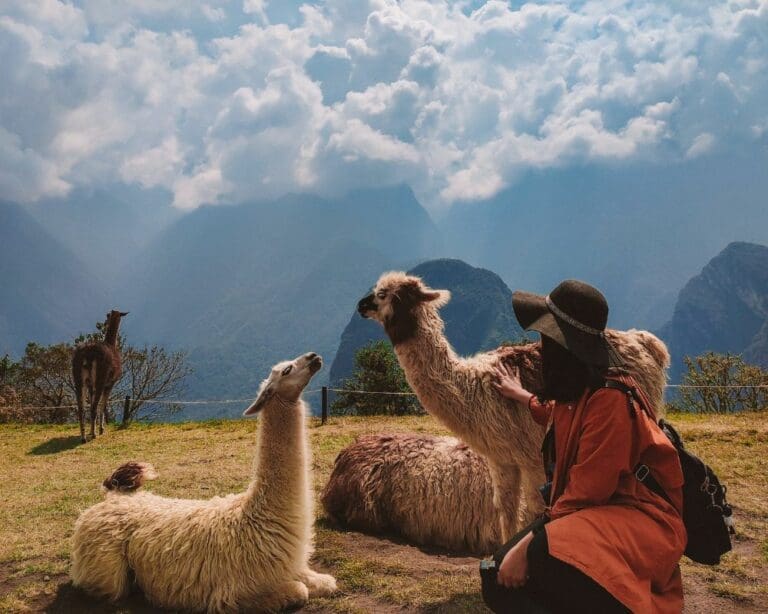

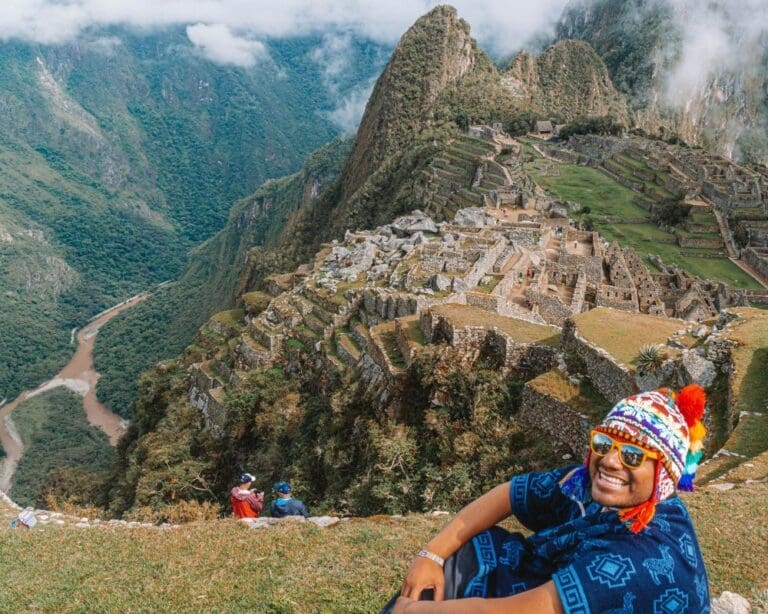
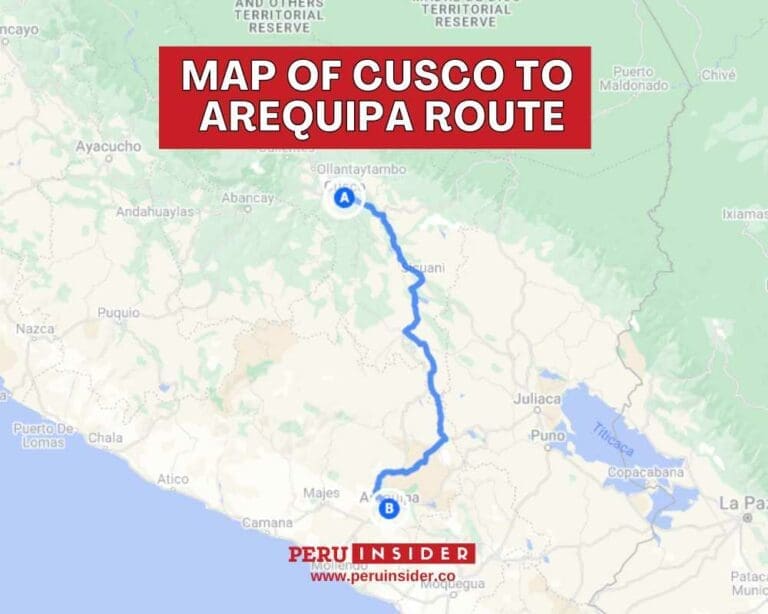

Machu Picchu is on my list, I knew there were several ways to reach the site. I however didn’t know there are 17 treks. Wow.
Going to Machu Picchu would be such a dream! I didn’t know there were so many ways to get there!
Great article! I had no idea that there were 17 ways to get to Machu Picchu! Will definitely use your post in my future planning. Thanks for sharing!
I’ve got Machu Picchu on my list. But had no idea there were so many ways to get to Machu Picchu so greatly appreciate your list. And awesome to also include the expected costs for every budget.